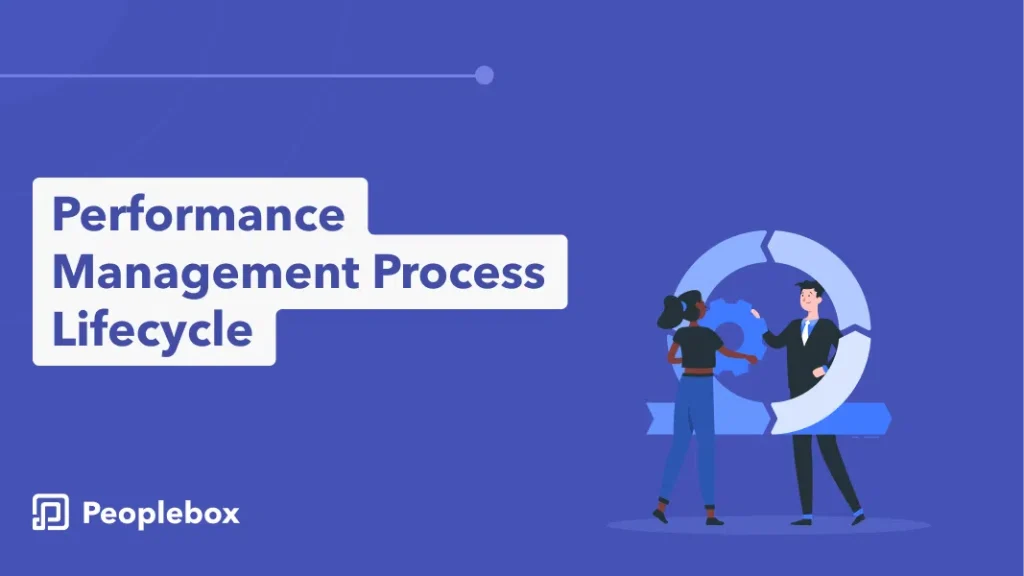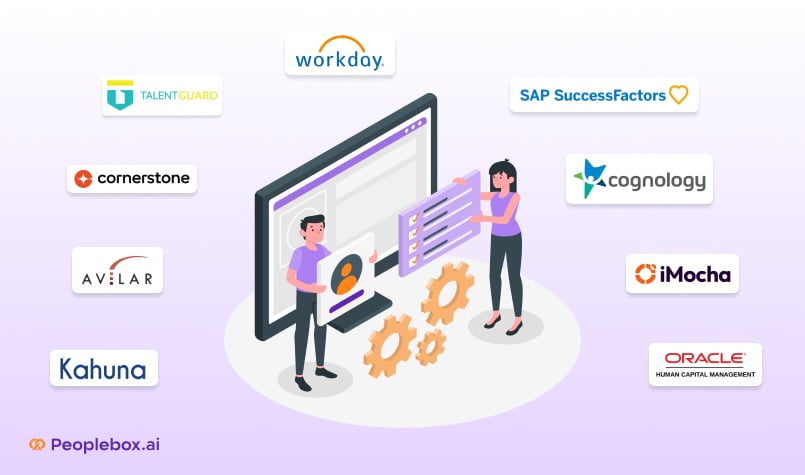Performance management and strategic planning are like two sides of a powerful coin in the business realm. Recent studies highlight their crucial roles in driving organizational success.
According to Deloitte, only 8% of companies report that their performance management process delivers high value, while 58% believe it is not an effective use of time. Gallup found that companies providing continuous strength-based feedback can reduce turnover by almost 15%.
Performance management enhances employee performance through structured approaches, while strategic planning sets the long-term course for an organization’s success. Together, they create a powerful synergy that enables businesses to reach new heights.
This blog will discuss the relationship between performance management and strategic planning, showing how their integration leads to remarkable outcomes.
What is Strategic Planning?
Strategic planning is the foundation of organizational success, systematically defining goals and crafting strategies to achieve them. It involves:
- Conducting SWOT analysis (Strengths, Weaknesses, Opportunities, and Threats)
- Setting priorities
- Allocating resources efficiently
Think of it as charting a clear course before embarking on a journey—ensuring every action contributes to the ultimate goal.
A well-executed strategic plan aligns with organizational objectives, ensuring seamless decision-making across all levels. This integration lays the groundwork for “strategic performance management”, which connects high-level goals with daily tasks, making strategy execution seamless.
Also read: 15 Must-Have Strategic Planning Software in 2024
Key Benefits of Strategic Planning in Performance Management
Strategic planning in performance management introduces a dynamic shift that brings a multitude of benefits to organizations seeking enhanced efficiency and success.
Let’s delve into these pivotal advantages:
1. Alignment of Objectives and Goals
Strategic planning works like a roadmap, making sure every employee’s efforts align with the company’s big-picture goals. Think of it like a well-coordinated team sport where each player has a role, but through cohesive collaboration, they all work together to win the game.
When objectives are clearly aligned, teams move in sync toward a shared vision. This prevents employees from working in silos and instead builds a strong culture of teamwork and collaboration. When performance management and strategic planning go hand in hand, employees understand how their daily tasks contribute to broader business success.
Wouldn’t it be great if everyone knew exactly how their work mattered? That’s what strategic planning does: it connects individual efforts to company-wide goals, keeping everyone motivated and moving forward together.
2. Clear Communication and Expectations
.
A strong strategic plan acts like a company-wide guidebook, making sure everyone knows their role, responsibilities, and what’s expected of them. When communication is clear, there’s no second-guessing or confusion, just a well-organized team moving in the same direction.
Think of it like a relay race: when every runner knows their part and when to pass the baton, the team runs smoothly. The same goes for businesses when expectations are clear, employees feel confident, work together effectively, and contribute to the company’s success.
3. Resource Allocation and Utilization
Strategic planning isn’t just about setting goals, it’s about making the best use of what you have. Think of it like a well-organized budget: when you plan wisely, every dollar, hour, and tool is put to its best use through effective resource utilization
By cutting out waste and ensuring the right resources go to the right places, companies can get more done without needing more. Whether it’s finances, people, or technology, smart planning helps businesses work efficiently, boost productivity, and achieve better results.
4. Proactive Problem-Solving and Risk Mitigation
In strategic planning, foresight is paramount. The process involves meticulously scrutinizing potential challenges and threats, enabling proactive problem-solving and risk mitigation strategies.
Just as a seasoned captain navigates through unpredictable waters, strategic planning equips organizations to navigate uncertainties confidently. This anticipatory approach bolsters performance resilience, minimizing setbacks and maintaining steadfast progress toward success.
Strategic planning, when seamlessly integrated with performance management, transforms organizations into finely tuned engines of progress, enabling them to surge ahead with purpose, precision, and resilience.
How to Align Strategic Planning and Performance Management
Strategically aligning performance management with the overarching organizational goals requires a structured approach that ensures everyone is on the same page and contributes effectively.
Here’s a detailed breakdown of the steps to achieve this alignment:
1. Establish a Shared Vision
Make sure every employee understands the company’s long-term vision and strategic goals. Use clear communication channels like internal newsletters, team meetings, and company-wide presentations to reinforce alignment and engagement.
2. Set Smart Objectives
Set Specific, Measurable, Achievable, Relevant, and Time-bound (SMART) goals to provide a clear roadmap. This removes ambiguity and helps employees understand exactly what success looks like and how to achieve it.
3. Use Performance Metrics
Identify key performance metrics that directly reflect the progress towards strategic goals. Metrics could range from financial indicators to customer satisfaction ratings. The chosen metrics should align with the overall strategic vision, ensuring that every team’s efforts contribute to the larger mission.
Track progress toward strategic goals with key performance indicators (KPIs). Regular reviews ensure teams stay aligned and allow for timely strategy adjustments to keep the organization on course.
4. Set Performance Targets
Set performance targets that are not only challenging but also attainable. These targets should push employees to excel while still being within reach.
Well-defined targets provide a clear benchmark for success and keep employees motivated to push their boundaries.
5. Leverage Performance Management Software
The alignment of strategic planning and performance management can be significantly enhanced through technology.
Performance measurement software, such as Peoplebox’s.ai 360-degree review system, is a powerful tool to streamline this alignment process. Such strategic planning tools provide a centralized platform for gathering, analyzing, and reporting performance data.
With predictive modeling capabilities, these tools can anticipate trends and provide insights for strategic decision-making.
6. Individual Alignment
Ensure employee goals align with the broader organizational objectives. When employees see a direct link between their tasks and the large organizational strategy execution, they feel a stronger sense of purpose and ownership.
This alignment also prevents silos and promotes a collective effort.
7. Regular Monitoring
Continuous tracking of performance against objectives enables timely course corrections and informed decision-making.
When issues arise, swift corrective actions can be taken, minimizing potential detours from the strategic path.
8. Feedback and Recognition
Real-time feedback helps employees improve and stay aligned with the organization’s strategy.Recognizing achievements reinforces the alignment between individual performance and strategic objectives.
Constructive feedback helps employees course-correct if they deviate from the path, ensuring they remain on track.
Suggested read: The Art of Writing Good Performance Reviews: Examples and Phrases
9. Foster Open Communication and Transparency
Encouraging transparent communication between employees and management builds trust and ensures that expectations are clearly defined.
Open communication fosters a collaborative work culture where employees feel valued and heard.
10. Encourage Employee Involvement in Goal-Setting
Allowing employees to contribute to the goal-setting process increases their sense of ownership and engagement.
Employees who feel involved are more likely to align their efforts with organizational success.
Performance Review Platform
Get a glimpse of how Peoplebox make performance reviews painless, actionable and fair
Challenges in Implementing Strategic Performance Management
Implementing strategic performance management is challenging due to misalignment, data inaccuracies, resource limits, and balancing short- and long-term goals. Clear strategies and the right tools help overcome these hurdles.
| Challenges | Description |
| Lack of Clarity | Misunderstood goals lead to misalignment and wasted resources. |
| Difficult Alignment | Larger organizations face complexities in linking employee efforts with broader strategies. |
| Data Accuracy Issues | Poor data management can result in misguided decisions. |
| Resource Constraints | Budget and technological limitations hinder proper execution. |
| Short-Term vs. Long-Term Focus | Balancing immediate results with long-term goals requires careful planning. |
| Complex Performance Measurement | Intangible goals like employee engagement are hard to quantify. |
Organizations can overcome these challenges through clear communication, robust planning, technological investments, and adaptability.
Embracing Strategic Planning for Performance Excellence with Peoplebox.ai
Strategic planning and performance management go hand in hand, ensuring businesses stay on track to achieve their goals. But to make this process truly effective, the right tools are essential.
Peoplebox.ai simplifies performance management with features like:
✅ 360-degree performance reviews
✅ Goal-setting and tracking
✅ Real-time performance analytics
✅ Seamless Slack integration for easy workflows
With real-time insights, automated evaluations, and data-driven decision-making, Peoplebox.ai helps organizations enhance strategy execution, boost employee performance, and drive long-term success.
To learn more about us, request a free demo today!
Performance Review Platform
Get a glimpse of how Peoplebox make performance reviews painless, actionable and fair







